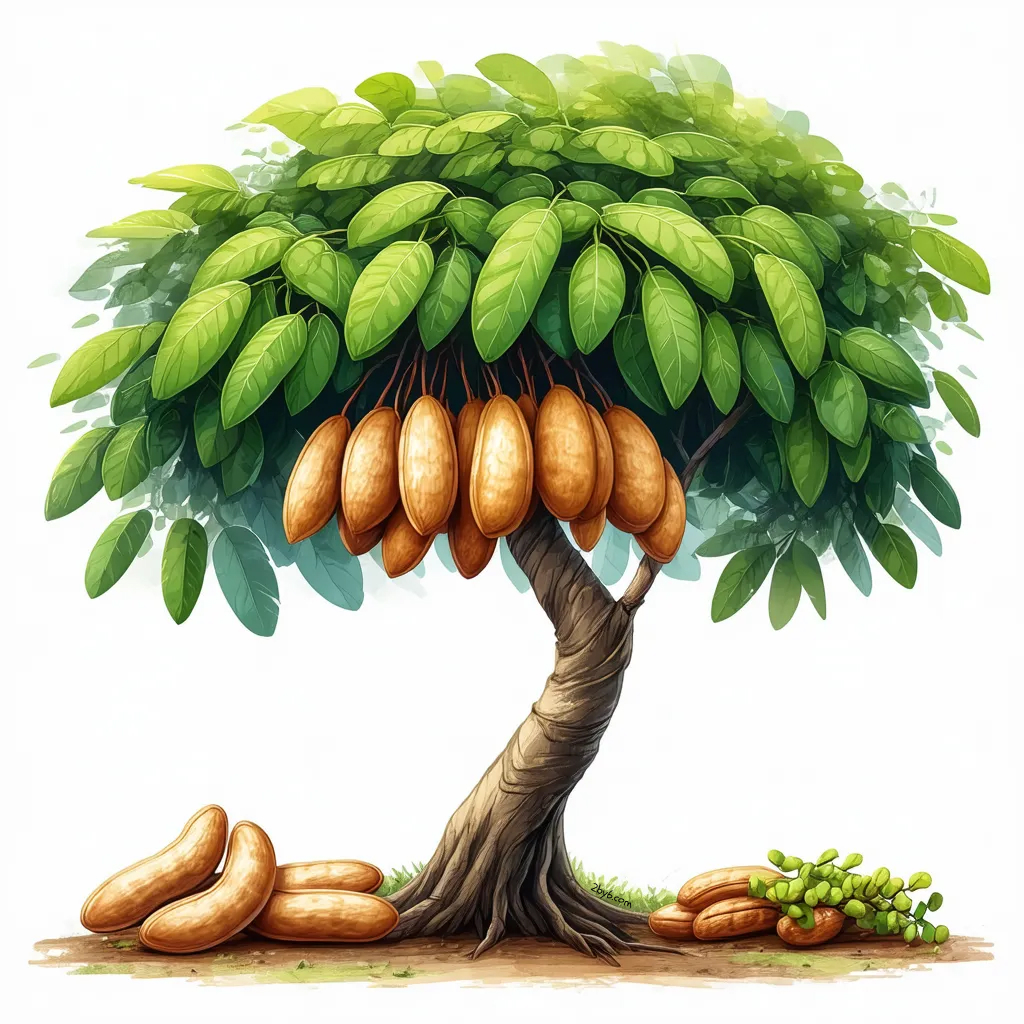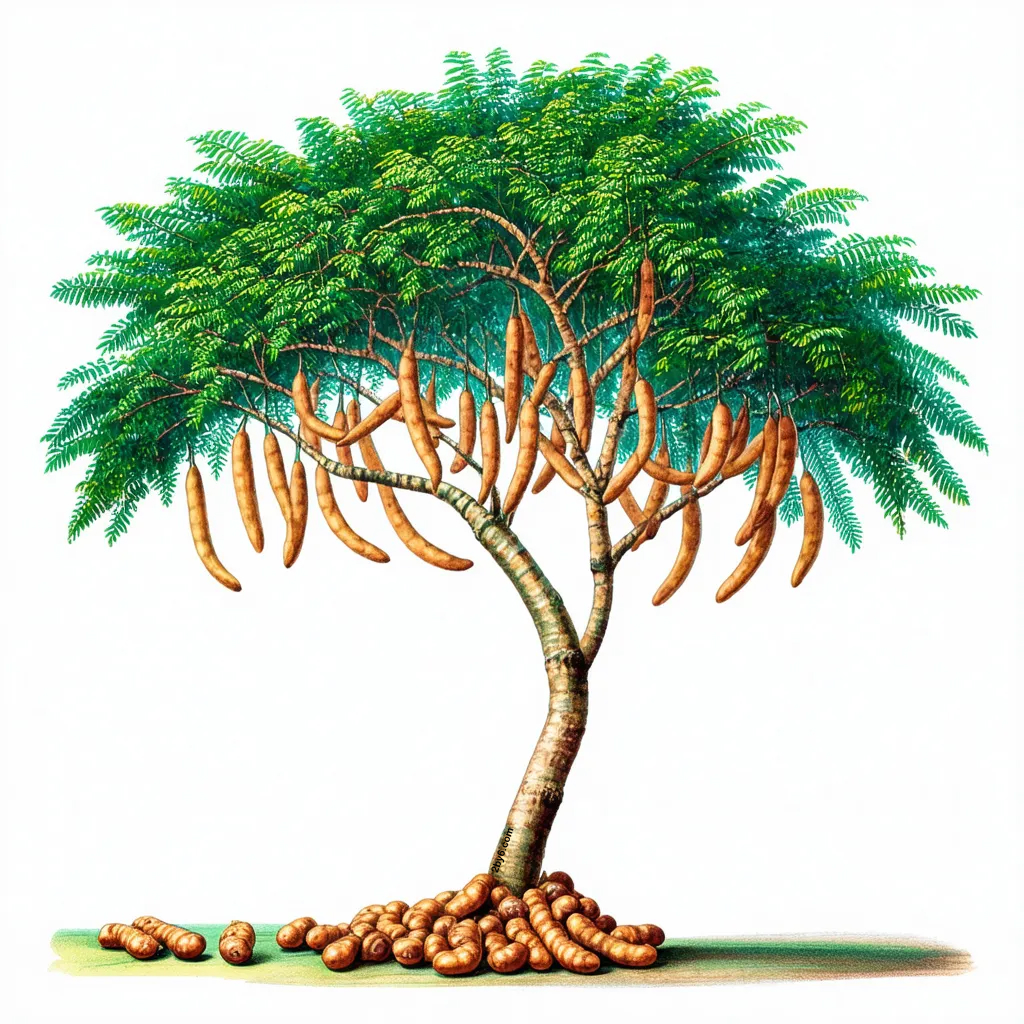Tamarind (Tamarindus indica).
| Janka hardness | 2,650 lbf (11,800 N) |
Tamarind timber consists of hard and close-grained furniture wood, which is yellowish-white, with occasional red streaks in it; the heart-wood is dark brownish-purple. Due to the tree growth patterns and climate areas where Tamarind grows, much of the timber and tamarind wood products available for purchase are made from the lighter sap wood with a good amount of spalting.
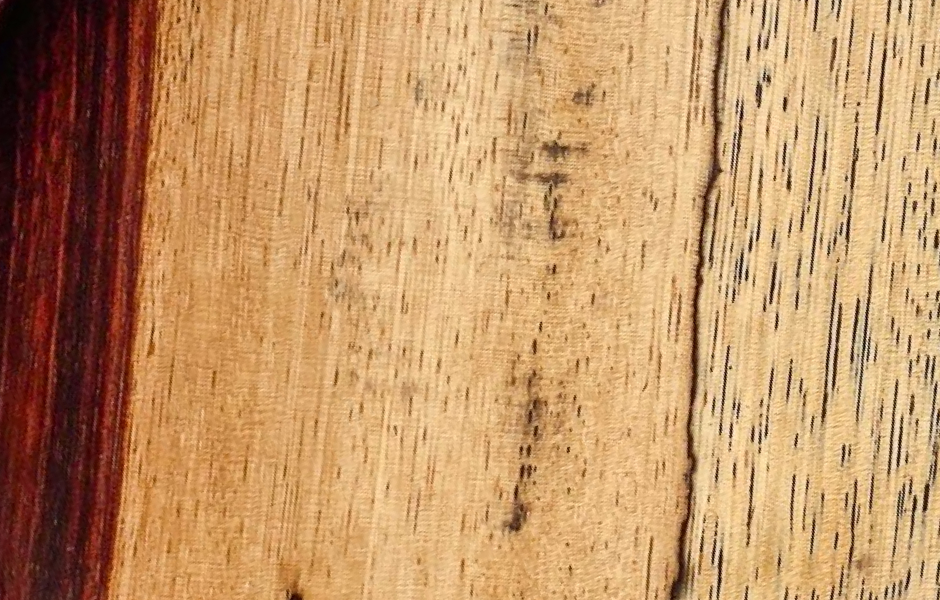
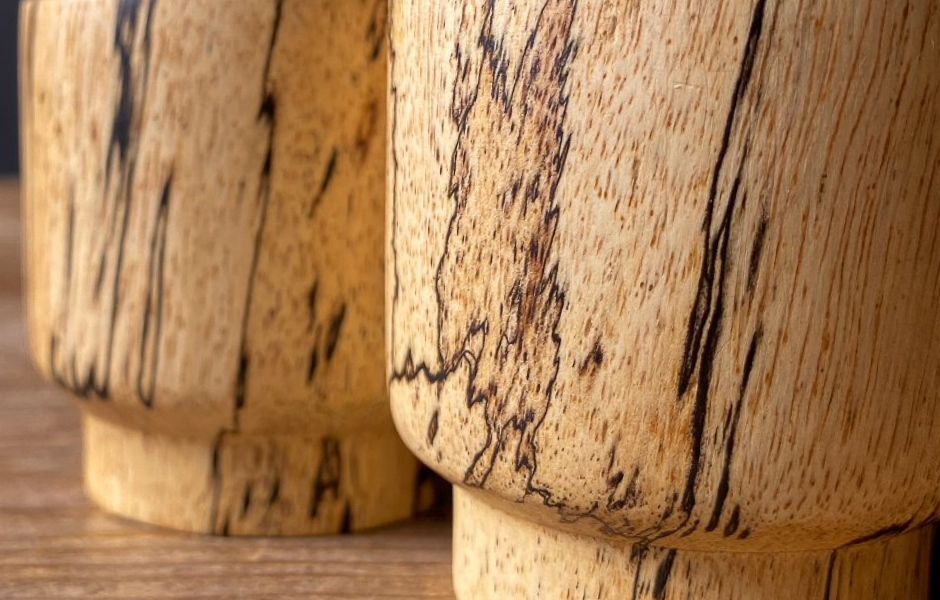
Wood Images: Mill & Mooch
The tamarind tree produces legumes, pod-like fruits that contain a sweet tangy pulp. The legumes and tender young leaves are used in cooking across much of the world’s tropical climates. The pulp is also used in traditional medicine and as a metal polish.
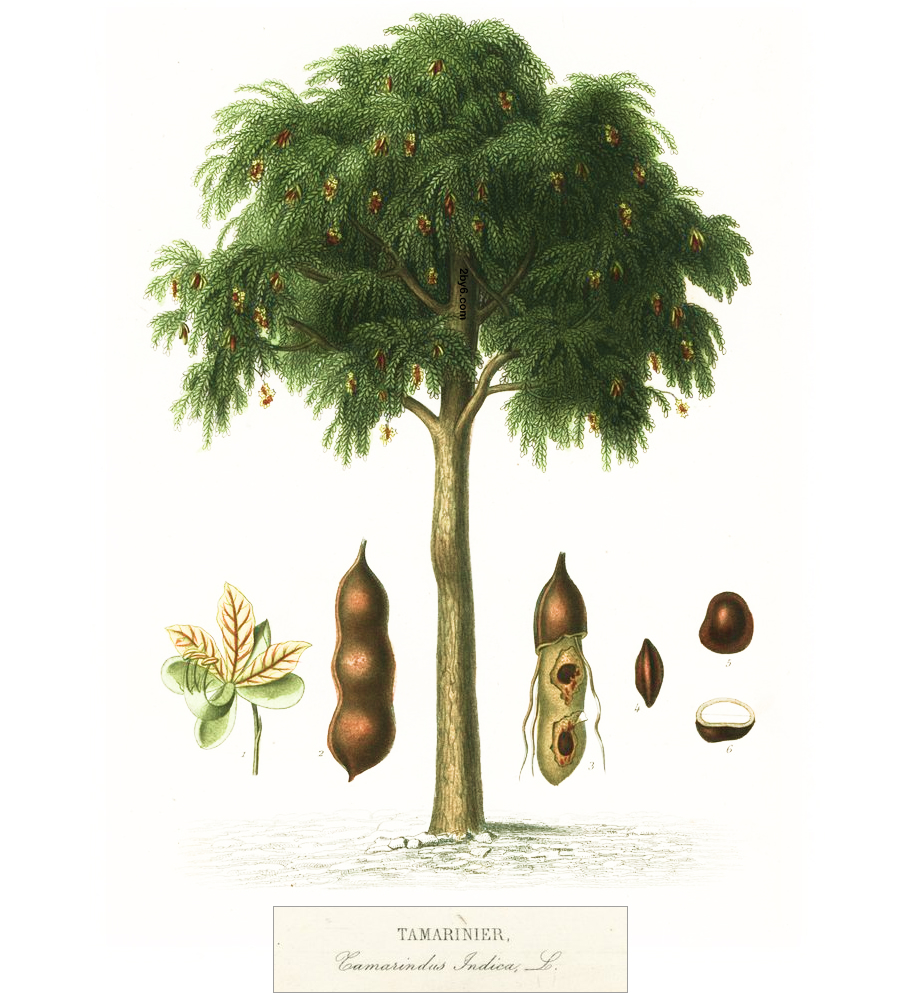
According to Fruits of the Hawaiian Islands by Gerrit Parmile Wilder the name is derived from Tamar, Arabic for Date, and Indus, Indian; thus literally meaning Indian Date. It is a native of the Indies, Egypt and Arabia. The tree is never leafless, and the foliage is graceful, pinnated and acacia like. It bears one crop a year, the season varying somewhat according to the location and elevation. It yields a handsome, hard and close-grained furniture wood, which is yellowish-white, with occasional red streaks in it; the heart-wood is dark brownish-purple. The pods are thick, linear, dark brown in color, and from 3 to 6 inches long. The seeds vary in number. The pulp surrounding the seeds has a pleasant acid flavor, and when made into syrup, forms the basis of a delicious, cooling beverage. This pulp is called the fruit, while the pod is spoken of as the shell. The Tamarind is propagated from both seeds and cuttings, and is undoubtedly one of the noblest of [Hawaii’s] tropical trees.
Tamarindus Indica, L. (Nom. Vulg. —Tamarindo, Sp.; Sampalok, Tag., Pam., Bik.; Sambak, Sumalagi, Kamalagi, Vis.; Tamarind, Eng.), according to The Medicinal Plants of the Philippines by T. H. Pardo de Tavera.
Uses: The pulp of the fruit is used to make a sort of sweet preserve and is very popular among the Filipinos. They prepare a refreshing drink from the pulp mixed with sweetened water and believing it to be beneficial to the liver, stomach and blood, they use too much of it. Its excessive use is rather prejudicial to the health, but given in moderation it is very efficient in allaying the thirst of fever patients.
The pulp contains weak laxative properties and it is customary to administer it in solution with cream of tartar. Its chemical composition is as follows:
| Citric acid | 9.40 |
| Tartaric acid | 1.55 |
| Malic acid | 0.45 |
| Potassium bitartrate | 3.25 |
| Sugar | 12.50 |
| Gum | 4.70 |
| Vegetable gelatin | 6.25 |
| Parenchyma | 34.35 |
| Water | 27.55 |
At the end of any sickness, especially after labor, the first bath given to the convalescent is with a decoction of the leaves of the “sampaloc,” to prevent convulsions, the native herb-doctors say.
Botanical Description: A large tree, somewhat resembling the elm in contour, with leaves opposite, abruptly pinnate. Leaflets 12 or more pairs, linear, with a notch at the apex, entire, glabrous. Flowers yellow-white, spattered dark red, racemose. Calyx, 4 sepals. Corolla, 5 lanceolate petals with crispate borders. Stamens monadelphous, dividing into 7 filaments above. The ripe pod is chocolate color, oblong, slightly compressed, straight or curved, 6–15 centimeters long, full of a light-brown pulp in which rest the seeds enveloped in a cellular membrane. These seeds are flattened, almost quadrangular; testa hard, of a chestnut color, shiny and without albumen.
Habitat: Very common everywhere in the islands. Blooms in May.
Further info about the possible medicinal applications of parts of the Tamarind tree and fruit. Obviously consult a doctor or scientist before you believe in or try any homeopathic remedies.
The pulp is also used as an astringent on skin infections. Leaves are used in treatment of swellings, tumour, ring worm, blood disorders, small-pox, eye diseases, earache etc. Flowers are useful in treatment of urinary troubles. Fruits are sour, tasty, indigestible, and astringent to bowels, laxative, heating, heart tonic, whereas seeds are useful in treatment of vaginal discharges and ulcers. According to the Unani systems of medicine, its bark is astringent and tonic whereas fruits are sour, sweetish, laxative and useful in liver complaints, vomiting, thirst, scabies, and sore-throat, stomatitis and blood disorders. – From https://www.dawn.com/news/255407
